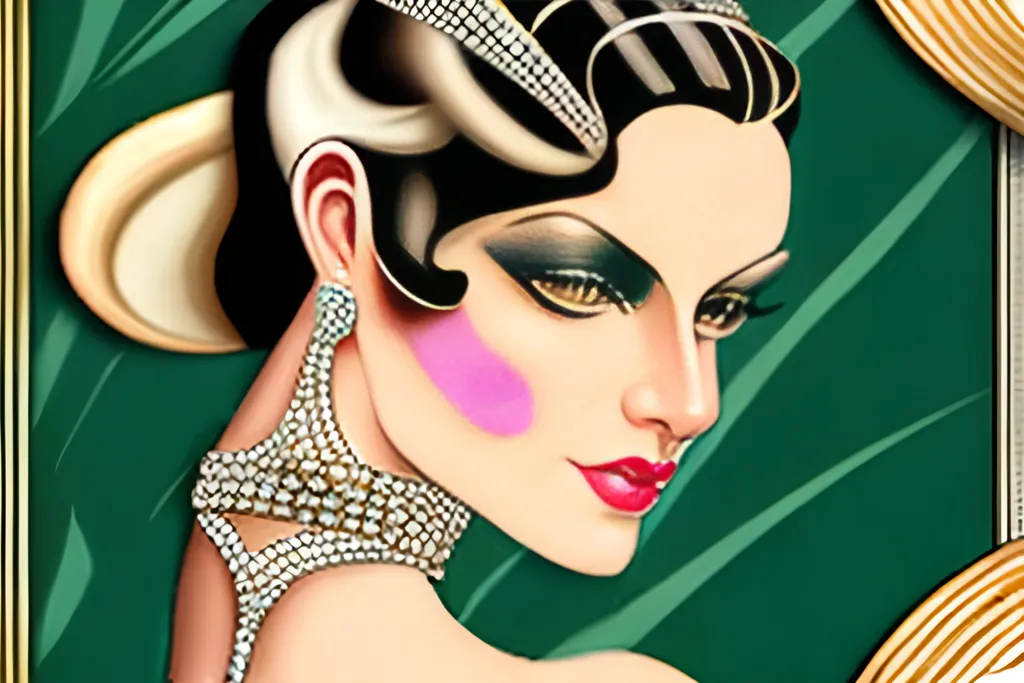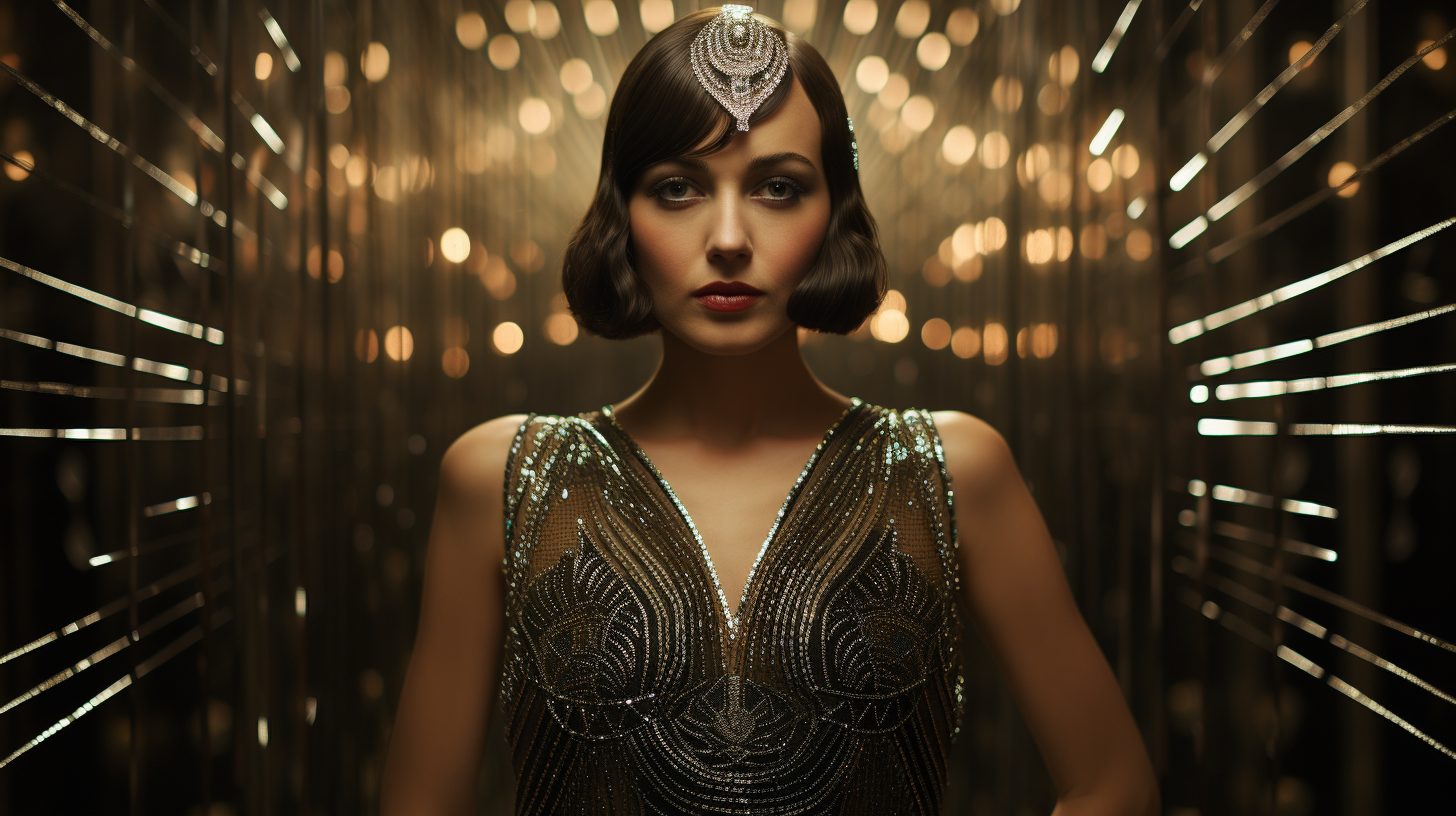
1920S Fashion : Unveiling the Glamour and Elegance
In the 1920s, fashion reflected liberation, embracing the flapper style with dropped waists and short hemlines. This era marked a shift towards modernity and individual expression.
The Roaring Twenties saw a revolution in fashion, with women discarding restrictive corsets for loose, boyish silhouettes. The iconic flapper look became popular, with its beaded dresses, feathered headbands, and bobbed haircuts. Men’s fashion also evolved, with suits becoming slimmer and jazzier.
Accessories such as cloche hats and long strands of pearls completed the look. This period was not only about fashion but also represented a cultural shift towards liberation and women’s rights. Overall, the 1920s fashion was bold, daring, and symbolized the changing attitudes of the time.

Credit: openart.ai
The Roaring Twenties
The Roaring Twenties marked a period of significant social and cultural change, characterized by jazz music, dance, and a new sense of liberation and freedom. This era saw a shift from traditional values to a more modern, progressive outlook.
Changing Cultural Landscape
The 1920s saw a departure from the conservatism of previous decades, with women embracing newfound independence and freedom. This shift in societal norms led to the rise of the “flapper” style, characterized by shorter hemlines and more relaxed silhouettes.
Impact On Fashion Industry
The Roaring Twenties had a profound impact on the fashion industry, with designers embracing the spirit of change and innovation. This era saw the popularization of bold colors, intricate beading, and embellishments that reflected the newfound sense of excitement and exuberance.
Women’s Fashion
Women’s fashion in the 1920s underwent a revolutionary shift, reflecting the changing social norms of the era. The style choices of women in the 1920s, specifically in the realm of fashion, were bold, daring, and truly emblematic of the liberating spirit of the times.
Flapper Style
The iconic flapper style emerged during the 1920s, characterized by dropped waistlines, loose-fitting silhouettes, and ornate embellishments. Flappers defied traditional norms with their daring fashion choices, sporting shorter hemlines and exposing arms and legs.
The Rise Of Hemlines
One of the most notable trends in 1920s women’s fashion was the dramatic rise of hemlines. Hemlines ascended, giving rise to knee-length skirts and dresses that allowed for more movement. This shift in hemlines symbolized the newfound freedom and independence of women during this era.
Men’s Fashion
The 1920s marked a significant shift in men’s fashion, as traditional styles gave way to more modern, sophisticated looks. From dapper suits to the influence of Hollywood, men’s clothing underwent a transformative evolution during this iconic era.
Dapper Suits
Dapper suits became the epitome of men’s fashion during the 1920s. The trend was characterized by slim-fitting, three-piece suits with high-waisted trousers and tailored jackets. The use of bold, pinstripe patterns and contrasting colors, such as navy and white, added a touch of flair to men’s formal attire.
The Influence Of Hollywood
Hollywood played a pivotal role in shaping men’s fashion during the 1920s. The silver screen showcased leading men who donned impeccably tailored suits, influencing the masses to emulate their sophisticated style. Hollywood heartthrobs like Rudolph Valentino and Charlie Chaplin became style icons, setting the tone for men’s fashion across the country.

Credit: www.thecollector.com
Accessories And Beauty Trends
The 1920s was a revolutionary era for fashion, with a newfound freedom and audacity that captivated the world. Along with the iconic flapper dresses and drop-waist silhouettes, the accessories and beauty trends of the time played a significant role in defining this fascinating period. From dazzling Art Deco jewelry to bold hairstyles and makeup, these elements added a touch of glamour and sophistication to the overall look. In this blog post, we will delve into the mesmerizing world of 1920s accessories and beauty trends and discover the key highlights that made this era so iconic.
Art Deco Jewelry
Art Deco jewelry was the epitome of elegance and luxury during the 1920s. Inspired by the geometric motifs and bold shapes of the Art Deco movement, this style of jewelry perfectly complemented the era’s fashion aesthetic. The designs featured distinctive details such as streamlined forms, vibrant gemstones, and an emphasis on symmetry. Both women and men adorned themselves with eye-catching jewelry, including necklaces, bracelets, earrings, and brooches. Popular materials included platinum, diamonds, pearls, and colorful gemstones like rubies and sapphires.
Art Deco jewelry seamlessly blended minimalism with opulence, allowing individuals to express their personal style with a touch of sophistication. The geometric patterns and clean lines of these exquisite pieces added a unique flair to any outfit, making them the perfect statement accessory for cocktail parties and soirées.
Hairstyles And Makeup
The 1920s brought about a revolution in hairstyles and makeup, reflecting the newfound freedom and liberation of women. Short bobs were all the rage, with many women opting to cut their hair into sleek and straight styles that accentuated their features. Finger waves and pin curls were also highly popular, adding a touch of elegance and glamour to any look. These hairstyles perfectly complemented the fashionable cloche hats that were commonly worn during the era.
When it came to makeup, a dramatic and daring look was favored. Women embraced bold, dark eyes with smokey eyeshadow and defined eyebrows. Kohl-rimmed eyes and long, dark lashes created a mesmerizing gaze. To achieve flawless skin, pale foundation was used to create a porcelain-like complexion, often paired with rosy cheeks for a natural yet vibrant look. Finally, deep red or plum-colored lips completed the glamorous, flapper-inspired makeup style.
Legacy And Modern Inspirations
The fashion of the 1920s left a lasting legacy that continues to inspire designers and fashion enthusiasts today. From the flapper dresses and cloche hats to the daring hemlines and bold accessories, the style of the 1920s captured the essence of the time. In this blog post, we will explore the revival of 1920s fashion in contemporary styles and its cultural impact.
The influence of 1920s fashion can be seen in modern-day clothing and accessories. Designers often draw inspiration from the glamorous and daring looks of the past to create unique and contemporary pieces. The use of flapper-style dresses, drop-waist silhouettes, and Art Deco patterns can be spotted on runways and in high-street fashion.
Modern designers also incorporate aspects of 1920s fashion into their collections by reimagining iconic trends. For example, the bobbed hairstyle, popularized by women in the 1920s, has made a comeback in recent years, with many celebrities and fashion-forward individuals sporting the chic and timeless look.
The fashion of the 1920s reflected the changing societal norms and the spirit of rebellion. The rise of the flapper culture, characterized by women who rejected traditional gender roles and embraced a newfound freedom, revolutionized fashion during the era. The shorter hemlines, dropped waists, and loose-fitting garments challenged the conservative styles of the time.
This cultural shift not only changed the way women dressed but also influenced other aspects of society. The 1920s fashion became a symbol of women’s liberation and empowerment, as it represented a break from the Victorian era’s corsets and restrictive clothing.
In addition to its impact on fashion, the 1920s also ignited social and cultural changes. The Jazz Age, with its lively music and vibrant atmosphere, became synonymous with the decade. The fashion of the era, with its glitz and glamour, mirrored the excitement and energy of the time, cementing its place in history.

Credit: fashiontimewarp.com
Frequently Asked Questions Of 1920s Fashion
What Was The Fashion Like In The 1920s?
The fashion in the 1920s was characterized by the iconic flapper style, with dropped waists, short hemlines, and bold accessories. Women embraced a more relaxed and liberated look, rejecting the corsets and embracing loose-fitting dresses and bobbed hairstyles.
Why Did Women’s Fashion Change In The 1920s?
Women’s fashion changed in the 1920s due to a combination of factors. The end of World War I brought about a societal shift and a desire for change. Women were also gaining more independence, and the fashion reflected this newfound freedom and confidence.
What Were The Popular Accessories In The 1920s?
Popular accessories in the 1920s included long pearl necklaces, feathered headbands, cloche hats, beaded handbags, and long gloves. These accessories added a touch of glamour and sophistication to the overall look of the era.
How Did Men’s Fashion Differ In The 1920s?
Men’s fashion in the 1920s moved away from the formal, structured styles of the past. The new trend embraced looser and more comfortable clothing, including wide-legged trousers, knitted sweaters, and short jackets. Menswear also saw the popularity of the iconic bowler hat and two-tone brogue shoes.
Conclusion
1920s fashion revolutionized trends and styles, influencing modern fashion today. The era brought about a significant shift in clothing, embracing freedom, expression, and individuality. From the iconic flapper dress to the rise of casual sportswear, 1920s fashion continues to inspire creativity and innovation in the fashion industry.
Explore and embrace the timeless elegance and spirit of the roaring twenties in your wardrobe.
